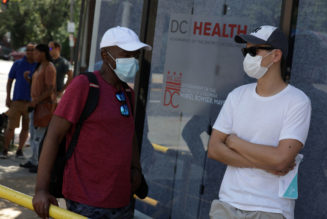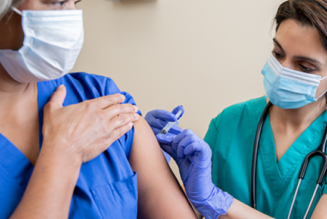Tooth decay is the most common chronic disease for children and adults alike. Poor oral health has been linked to tooth loss, oral infections and an increased risk of systemic conditions such as heart disease, diabetes and stroke. Dental problems can also impact self-esteem, social interactions and mental health. Oral disease can be costly. Each year $45 billion is lost in productivity in the United States because of untreated oral disease, and 37 million school hours are lost due to unplanned urgent dental care. These long-term concerns are largely preventable with routine oral hygiene and dental care at every age.
Over the past two years, state legislatures across the country have sought to reduce barriers to oral health care by addressing insurance and payment reform, strengthening the oral health workforce and expanding access to teledentistry.
Access to quality oral health care remains difficult for many Americans but especially for rural residents, minority residents and people with lower incomes. Children living in rural communities who are members of a minority group or a lower-income household may experience higher rates of untreated cavities and gingivitis. For children ages 2 to 5 years, 33% of Hispanic children and 28% of non-Hispanic Black children had cavities and severe tooth decay in their primary teeth, compared with 18% of non-Hispanic white children. Seventeen percent of children from low-income households have untreated cavities and severe tooth decay in their primary teeth, over three times the percentage of children from higher-income households.
This gap isn’t limited to children: low-income and uninsured adults are three times as likely to have four or more untreated cavities as adults with higher incomes or private insurance. Nearly twice as many non-Hispanic Black or Mexican American adults have untreated cavities as do non-Hispanic white adults.
Insurance and Payment Reforms
In 2023 and 2024, several states passed legislation related to insurance and payment reforms. States provided more residents with a Medicaid oral health benefit, increased provider reimbursement rates for Medicaid, explored price transparency for oral health insurance and prohibited insurers from setting prices.
At 27%, the proportion of the general population without dental insurance is almost three times as high as the 9.3% of the population without health insurance. Several states have sought to reduce the number of people without dental coverage by modifying their state’s Medicaid eligibility requirements. For example, New York and Utah authorized their states’ Medicaid plans to include dental care for all residents up to 250% of the federal poverty line. Previously, New York’s free dental care program was limited to residents below 138% of the federal poverty line threshold, and Utah’s program was limited to specific residents and program enrollees.
While 47 states provide some dental benefits for adults enrolled in Medicaid, provider participation in Medicaid remains a barrier to accessing oral health services. About 33% of providers accept Medicaid, and low reimbursement rates are cited as one barrier for providers to accept patients enrolled in Medicaid. Some research suggests increasing reimbursement rates is one way to boost provider participation. In 2023, Nebraska passed legislation to increase the Medicaid dental reimbursement rate by 25%.
Several states are exploring payor efficiency in oral health costs with dental loss ratios. These ratios refer to the proportion of the insurance premium revenue spent on patient care instead of operating costs. Some states are setting a minimum ratio that dental plans must meet, with a corresponding rebate requirement for plans spending less than that minimum. In other words, insurers that do not meet the minimum dental loss ratio may be required to make up the difference through rebates issued to patients. Rhode Island requires dental insurers to spend at least 85% of premiums on patient care. In 2024, similar bills were also introduced in at least nine states.
Lastly, insurers have been exerting control over price setting and billing decisions, which can contribute to high costs for patients. Tennessee prohibits insurance carriers from dictating pricing to dentists for non-covered services and allowing dentists to accept multiple payment options.
Oral Health Workforce
States are experiencing record shortages of oral health professionals. The current workforce provides dental care to about 55% of the population. Nearly 70 million Americans live in dental health professional shortage areas, or geographic regions with a population-to-provider ratio of 5,000-to-1, or in high-need areas with a ratio of 4,000-to-1.
Several states are pursuing strategies to increase the number of oral health professionals. For example, Wisconsin is using state funds to expand dental programs at technical colleges to train more dental hygienists, dental assistants and dental therapists. Tennessee is increasing the number of dental hygienists who can be supervised by a dentist in public health settings, which may increase the volume of dental hygienists working in community settings.
Dentists have some of the highest student loan debts among major health professionals, averaging about $300,000, which may deter the oral health workforce from practicing in under-resourced areas, further exacerbating workforce shortages in certain areas. Some states are incentivizing new dental providers to enroll in Medicaid and serve these under-resourced areas. Nebraska offers loan repayments up to a full year of tuition for each year of service for new dentists serving patients with Medicaid in designated shortage areas.
Interstate compacts, which permit dental professionals to practice in jurisdictions outside their state of licensure, are another strategy to support the oral health workforce. Before Minnesota, Tennessee and Wisconsin recently joined the Dentist and Dental Hygienist Compact, dentists were largely limited to practicing in the state they were licensed. The compact facilitates multistate practice, reduces administrative burdens, expands access to qualified professionals and increases employment opportunities to new markets.
Expanding Teledentistry
Teledentistry is another policy option that can be especially effective in health professional shortage areas. Teledentistry allows patients to receive consultations, assessments and even some treatments remotely, reducing the need for in-person visits. Virtual access to dental care has been shown to enhance access by minimizing the need to travel long distances. Encouraging readily accessible dental services can facilitate early intervention and preventive care, helping address oral health issues before they progress into more serious conditions. At least 23 states allow teledentistry, and in recent years, Alabama and Illinois passed legislation providing guidelines for licensed dentists to use the services.
For more on oral health policy, see these NCSL resources: Maternal and Child Health Legislative Database, Workforce Strategies to Improve Access to Oral Health Care and The ABCs of School-Based Oral Health Services.









